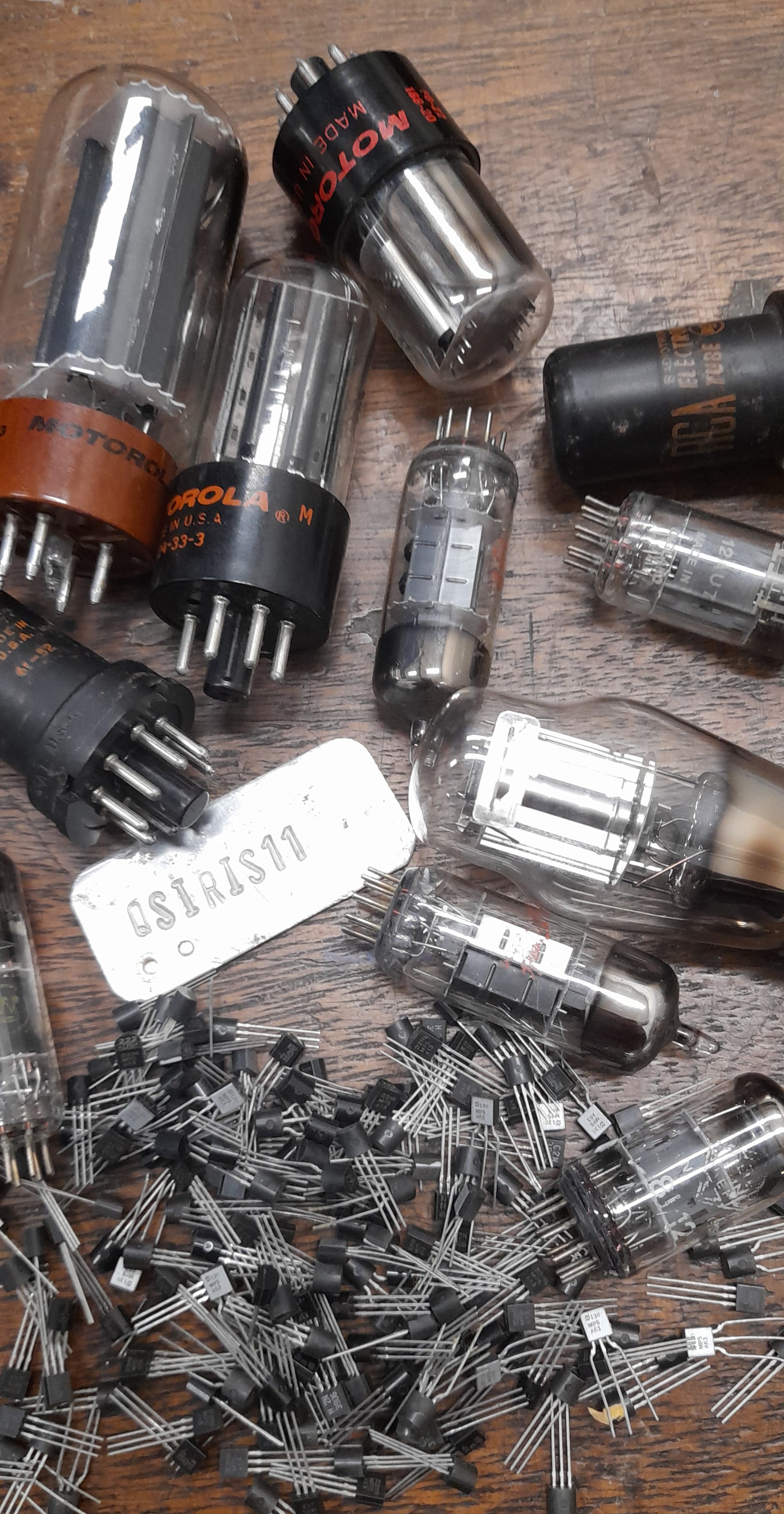Del Bulbo al Silicio (Parte 2) [ESP-ENG] From Bulb to Silicon (Part 2)
Hola amigos de Hive, espero se encuentren genial
Hoy continuaré con la segunda parte de la tecnología valvular
La llegada del transistor y el futuro en miniatura
Con el paso del tiempo, las válvulas al vacío alcanzaron sus límites físicos, y la tecnología exigía dispositivos más pequeños, eficientes y duraderos. Aquí es donde Motorola, junto con Texas Instruments, tomó el relevo, llevando la innovación a otro nivel con el desarrollo del transistor, que cambiaría para siempre la historia de la electrónica.
![English]
Hello Hive friends, I hope you are feeling great.
Today I will continue with the second part of valve technology
The arrival of the transistor and the future in miniature
As time went by, vacuum tubes reached their physical limits, and technology demanded smaller, more efficient, and longer-lasting devices. This is where Motorola, together with Texas Instruments, took over, taking innovation to another level with the development of the transistor, which would forever change the history of electronics.

La Sociedad Motorola y Texas Instruments: El renacimiento del transistor
En la década de 1950, mientras las válvulas aún dominaban la electrónica, surgió la alianza entre Motorola y Texas Instruments, dos gigantes que compartían la visión de un futuro más eficiente. Texas Instruments ya estaba trabajando en la fabricación de los primeros transistores, y en 1954 lanzó el primer transistor de silicio comercial, transformando la electrónica al reducir significativamente el tamaño y el consumo de energía de los dispositivos.
Motorola y el transistor: La nueva era de la movilidad
Motorola, empresa fundada por Paul Galvin, rápidamente adoptó el transistor, utilizándolo en sus radios y equipos de comunicación. Las válvulas, aunque robustas, ya no podían competir con los nuevos transistores en términos de tamaño y eficiencia. La nueva tecnología permitió a Motorola lanzar los primeros radios portátiles de transistores, lo que marcó el comienzo de la verdadera movilidad en la comunicación.

![English]The Motorola Society and Texas Instruments: The Renaissance of the Transistor
In the 1950s, while tubes still dominated electronics, an alliance emerged between Motorola and Texas Instruments, two giants that shared the vision of a more efficient future. Texas Instruments was already working on manufacturing the first transistors, and in 1954 it released the first commercial silicon transistor, transforming electronics by significantly reducing the size and power consumption of the devices.
Motorola and the transistor: The new era of mobility
Motorola, a company founded by Paul Galvin, quickly adopted the transistor, using it in its radios and communication equipment. The tubes, although robust, could no longer compete with the new transistors in terms of size and efficiency. New technology allowed Motorola to launch the first portable transistor radios, marking the beginning of true mobility in communication.
El transistor: Una revolución que trascendió lo técnico
El transistor no solo era una innovación técnica, sino también una manifestación del deseo humano de avanzar. Aunque estos pequeños dispositivos no tenían el brillo cálido de las válvulas, trajeron consigo una promesa aún mayor: la miniaturización de la tecnología y la creación de dispositivos portátiles que cambiarían nuestras vidas. Texas Instruments, junto a Motorola, no solo dieron vida a una nueva era tecnológica, sino que pusieron las bases para la revolución digital que vendría con los circuitos integrados.
![English]
The transistor: A revolution that transcended the technical
The transistor was not only a technical innovation, but also a manifestation of the human desire to advance. Although these small devices did not have the warm glow of tubes, they brought with them an even greater promise: the miniaturization of technology and the creation of wearable devices that would change our lives. Texas Instruments, together with Motorola, not only gave life to a new technological era, but also laid the foundations for the digital revolution that would come with integrated circuits.

El alma de la innovación
Así como las válvulas electrónicas RCA representaron una era de romanticismo y conexión en la primera mitad del siglo XX, los transistores de Motorola y Texas Instruments fueron los pioneros de una nueva era: la era de lo diminuto, pero potente. En esa transición tecnológica, no solo hubo avances, sino también una evolución del espíritu humano. La búsqueda de mejorar, de ir más allá de los límites, y de acercar al mundo a través de la tecnología es algo que compartieron tanto las válvulas como los transistores.
![English]
The soul of innovation
Just as RCA electronic tubes represented an era of romance and connection in the first half of the 20th century, transistors from Motorola and Texas Instruments pioneered a new era: the era of the tiny but powerful. In this technological transition, there were not only advances, but also an evolution of the human spirit. The quest to improve, to go beyond limits, and to bring the world closer together through technology is something that both tubes and transistors shared.

Hoy, al mirar hacia atrás, podemos ver que la innovación siempre ha sido más que solo técnica. Es un reflejo de la creatividad humana, de nuestros sueños y aspiraciones. Las válvulas, los transistores, y cada pequeño avance tecnológico son testimonio de nuestro deseo de trascender lo conocido y construir un futuro que, aunque más pequeño en escala, siempre busca un mayor impacto.
![English]
Today, looking back, we can see that innovation has always been more than just technical. It is a reflection of human creativity, of our dreams and aspirations. Valves, transistors, and every small technological advance are testimony to our desire to transcend the known and build a future that, although smaller in scale, always seeks a greater impact.
